Introduction
Winter camping is an exciting way to experience nature in the snowy landscapes and starlit skies. But before you head out into the cold, it’s crucial to prepare properly. In this guide, we’ll break down everything you need to know about getting ready for your winter camping trip. From mastering food prep to understanding weather challenges and choosing the right gear, we’ll cover it all in simple, easy-to-understand steps. So, if you’re wondering, “How do I prepare for winter camping trip” – stick with us as we walk you through the essentials for a safe and enjoyable adventure.
Table of Contents
Why preparation is crucial for winter camping?
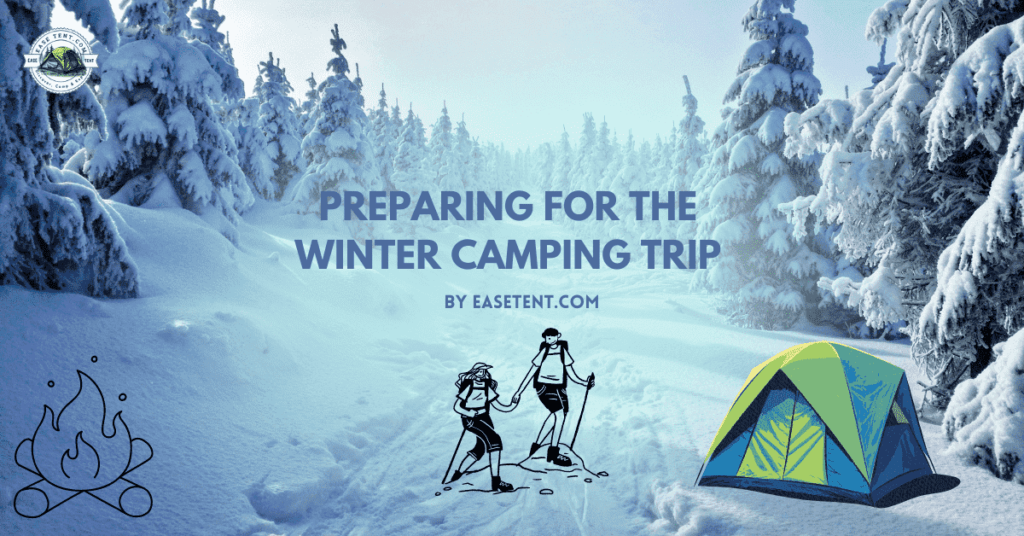
Winter camping is an exciting adventure, but it’s not as simple as a walk in the park. It’s more like exploring a snowy wonderland! To have the best time, you need to be ready for anything. That means being prepared for freezing temperatures and even unexpected winter storms. When you’re prepared, you can relax and enjoy the magic of winter without any worries.
Mastering Winter Camping Food Preparation
Menu Panning for Cold Weather
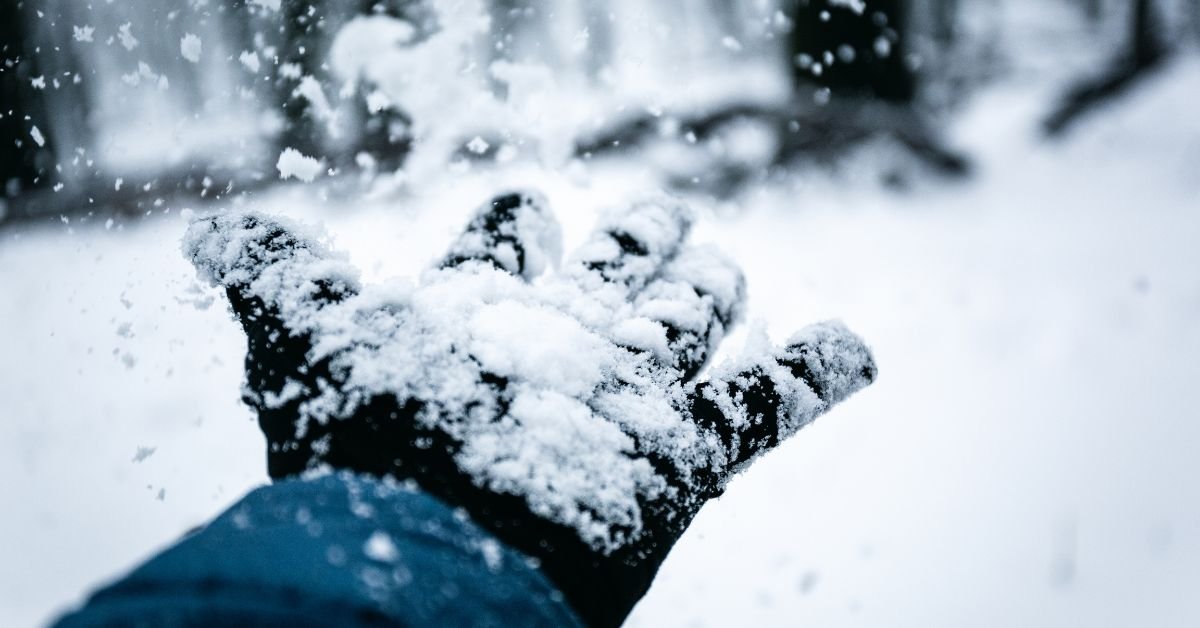
Selecting Full of nutrients and highly energetic Foods:
- When planning your winter camping menu items, it’s vital to choose foods that provide lots of energy and nourishment to keep you warm and fueled over cold weather activities.
- Focus on foods that are rich in carbohydrates, proteins, and fats because these nutrients provide long-lasting energy.
Considerations for Hot Meals and Beverages:
- In cold weather, hot meals and beverages can provide much-needed warmth and relaxation.
- Plan your menu to include plenty of options for hot soups, stews, and drinks like coffee, tea, or hot cocoa.
- These items not only help to maintain body temperature but also boost morale during freezing open-air adventures.
Choosing Compact Cooking Gear
Portable Stoves and Camping Stoves:
- When selecting cooking gear for winter camping, choose portable stoves or camping stoves that are lightweight and easy to carry.
- Look for models that are designed to function well in cold temperatures and windy conditions, ensuring you can cook your meals safely and efficiently.
Durable and Lightweight Cooking Tools:
- Pack durable and lightweight cooking instruments that are suitable for outdoor use.
- Consider items like folding tubs/pots, pans, heat-resistant spatulas, and multi-purpose kits that can handle a variety of cooking tasks.
- These gears should be small in size and simple to clean, which makes them perfect for camping trips.
Packing Non-Perishable Essentials
Carrying Long-Lasting Food Items:
- When packing food for winter camping, prioritize non-perishable items that have a long shelf life and don’t require refrigeration.
- This includes items like canned soups, dehydrated meals, nuts, granola bars, and dried fruits.
- These foods are lightweight, easy to pack, and provide essential nutrients to keep you energized throughout your trip.
Including High-Energy Snacks for Sustained Energy:
- Pack high-energy snacks that provide a quick boost of energy when you need it most.
- Choose items like trail mix, energy bars, jerky, and chocolate, which are packed with high amounts of calories and nutrients that will keep you active during long hikes or outdoor activities.
- These snacks are easy to carry and can be eaten while walking, which is great for winter camping trips.
Preparation of Pre-Made Meals:
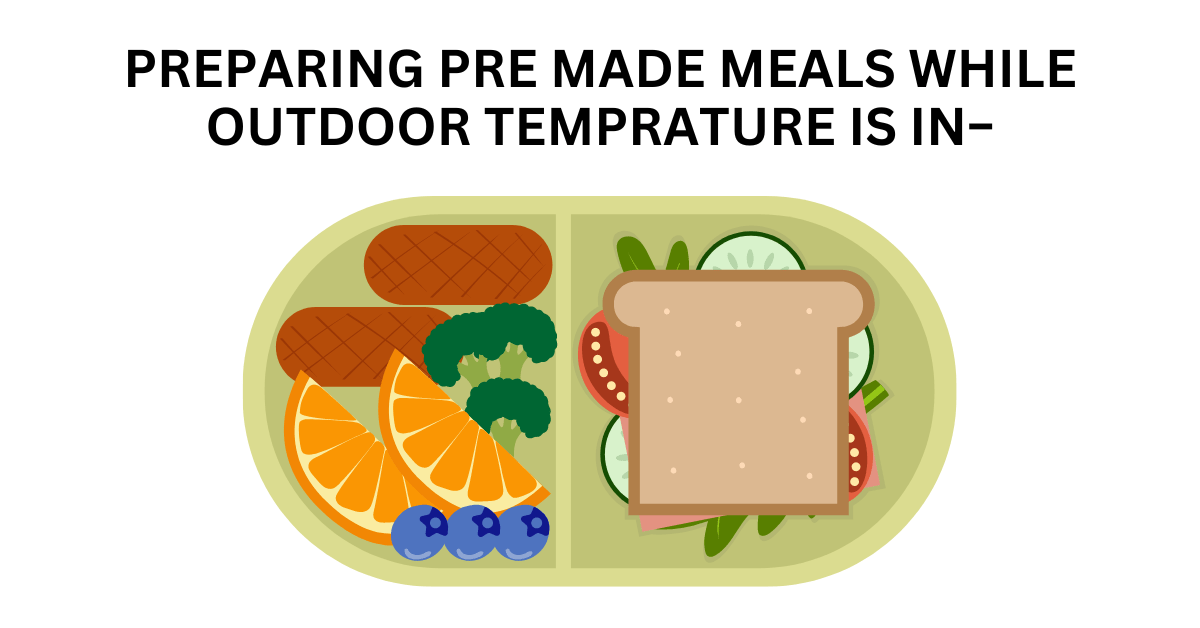
Preparing and Portioning Meals in Advance:
- Before heading out on your winter camping trip, consider pre-cooking and splitting meals in advance.
- This not only saves time and effort at the campsite but also ensures you have access to hot, nutritious meals when you need them most.
- Cook items like soups, stews, pasta dishes, and casseroles ahead of time, and separate them into specific portions for easy reheating.
Vacuum-Sealing for Freshness and Convenience:
- To preserve the freshness of pre-made meals and reduce bulk in your backpack, consider vacuum-sealing them before packing.
- Vacuum-sealed bags help prevent spoilage and keep food items fresh for longer periods and it allows you to enjoy delicious meals throughout your camping trip.
- Additionally, vacuum-sealed bags are small and lightweight, which makes them easy for packing and transportation.
Insulated Containers for Hot Drinks
Insulated Water Bottles and Thermoses:
- Keep hot drinks like coffee, tea, or hot cocoa warm throughout the day by packing them in insulated water bottles or thermoses.
- These containers are designed to hold heat for long periods, ensuring your beverages stay hot and cheering even in cold weather.
- Choose insulated bottles with leak-proof lids and wide mouths for easy filling and cleaning.
Using Lidded Mugs for Spill Prevention:
- When enjoying hot drinks at the campsite, use lidded mugs or insulated cups to prevent spills/leaking and keep beverages warm.
- Lidded mugs are designed to hold heat and prevent liquids from cooling too quickly, which allows you to enjoy every sip of your favorite hot beverage.
- Look for mugs with sturdy handles and secure lids that are easy to grip and open, even with gloved hands.
Ensuring Food Storage Safety
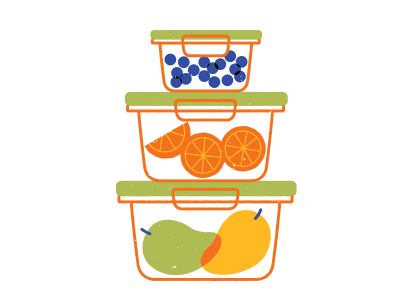
Properly Storing Perishable Foods:
- Store perishable foods like meats, dairy products, and fresh produce in airtight containers or sealed bags to prevent contamination and spoilage.
- Keep these items separate from non-perishable foods to avoid cross-contamination and foodborne (disease caused by food) illnesses.
- Additionally, store perishable items in a cooler with ice packs or frozen gel packs to maintain proper temperature and freshness.
Preventing Wildlife Interaction with Food Supplies:
- To avoid attracting wildlife to your campsite, take precautions to properly store and dispose of food supplies.
- Use bear-proof containers or animal-resistant bags to store food items when you’re not around or not using them. Hang them high on a tree branch or any higher pole to keep them out of reach of animals.
- Avoid leaving food scraps or leftovers around the campsite and clean up any spills or crumbs immediately to minimize the risk of attracting unwanted visitors.
If you want to learn in detail about what food to take camping without a freezer then I suggest you check my this blog post (What food to take camping without a What food to take camping without fridgeWhat food to take camping without fridgefridge)
Bringing Essential Cooking Ingredients
Packing Spices, Cooking Oils and Seasonings:
- Enhance the flavor of your meals by packing essential cooking ingredients like spices, cooking oils, and sauces.
- Choose compact containers or travel-sized packets to minimize bulk and save space in your backpack. Consider pre-measuring ingredients and storing them in labeled bags for easy meal preparation at the campsite.
Travel-sized sauces and toppings for Flavor Enhancement:
- Add extra flavor to your meals with travel-sized condiments like ketchup, mustard, hot sauce, and salad dressing.
- These small, portable bottles are easy to carry for outdoor cooking and can be easily packed in your backpack or cooler. Look for leak-proof containers with secure lids to prevent leakage and keep food dressing fresh during your camping trip.
Adapting Recipes for Outdoor Cooking
Simplifying Recipes for Minimal Cooking Equipment:
- Choose simple recipes that require minimal cooking equipment to prepare.
- Look for one-pot meals, foil packet dinners, and campfire-friendly recipes that can be easily cooked over an open flame or on a portable stove.
- These recipes not only save time and effort at the campsite but also allow you to focus on enjoying your outdoor adventure.
Experimenting with Campfire Cooking Techniques:
- Get creative with your outdoor cooking by experimenting with different campfire cooking techniques. Try grilling, roasting, baking, or steaming food over an open flame to add depth and flavor to your meals.
- Use cast iron cookware, grates, skewers, or aluminum foil to cook a variety of dishes, from dynamic meals to tasty snacks.
- Campfire cooking is not only a useful cooking method but also adds an element of fun and adventure to your winter camping experience.
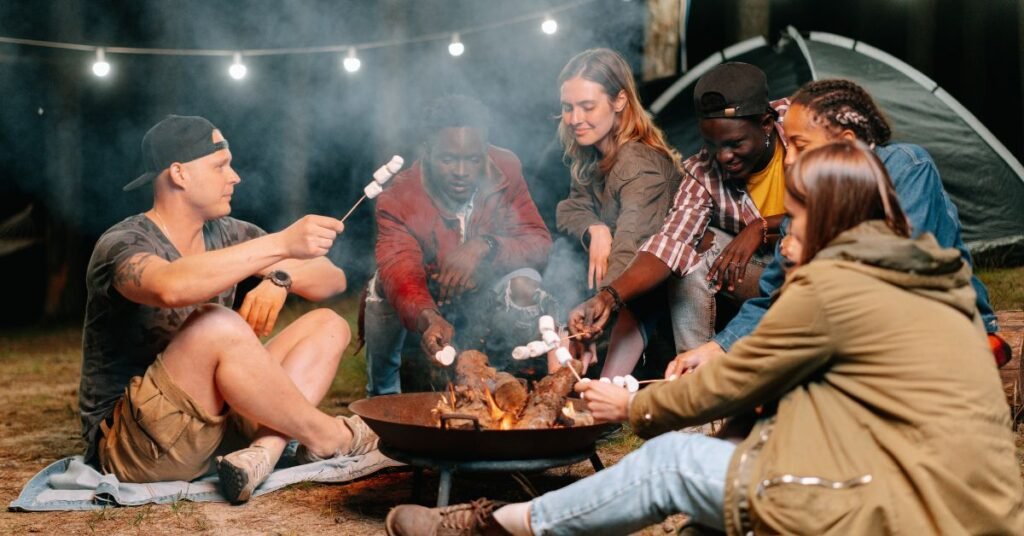
This inclusive guide covers all segments of preparing food for winter camping, from menu planning to outdoor cooking techniques, in simple and easy-to-understand language.
What are the challenges of winter camping
Winter camping creates several challenges that campers need to be prepared for. These challenges include extreme cold temperatures, snowy conditions, and limited daylight hours. It’s necessary to understand these challenges and plan properly to ensure a safe and enjoyable camping experience.
Weather considerations:
- Weather plays a significant role in winter camping and can affect various aspects of your trip.
- It’s crucial to consider weather forecasts and prepare for changing conditions.
- This includes being aware of temperature fluctuations, wind speeds, and the probability of snow or rainfall.
Temperature extremes:
- One of the primary challenges of winter camping is dealing with temperature extremes.
- During the winter months, temperatures can drop significantly and it leads to the risk of hypothermia and frostbite (tissue damage caused by freezing temperatures).
- It is necessary to dress in layers, use thermal outwear, and stay dry to maintain body heat and prevent cold-related injuries.
Snow and Rainfall:
- Snow and drizzle are common incidents during winter camping trips.
- Heavy snowfall can make travel difficult and create hazards such as landslides and snowdrifts (piles of snow formed by wind).
- It’s essential to be prepared for these conditions by bringing appropriate kits, such as snowshoes or traction devices (Gear for footwear to improve grip on slippery surfaces) and understanding how to safely navigate through snowy landscapes.
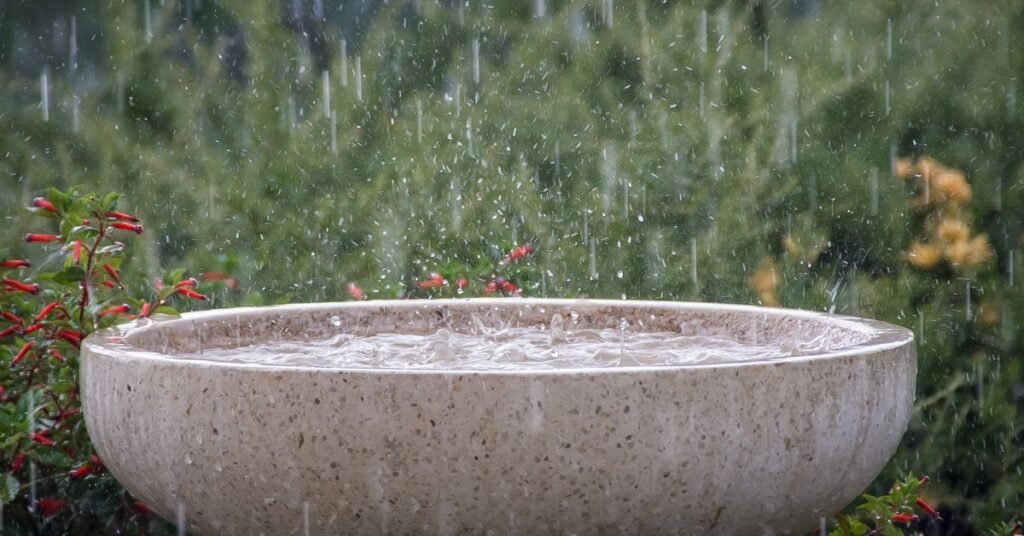
- Snow and drizzle are common incidents during winter camping trips.
- Heavy snowfall can make travel difficult and create hazards such as landslides and snowdrifts (piles of snow formed by wind).
- It’s essential to be prepared for these conditions by bringing appropriate kits, such as snowshoes or traction devices (Gear for footwear to improve grip on slippery surfaces) and understanding how to safely navigate through snowy landscapes.
Shorter daylight hours:
- In winter, the days are shorter, and there are few hours for outdoor activities because the sun sets earlier. So, this limited sunshine can impact your camping experience, especially if you’re planning to hike or explore during the day.
- It’s very important to plan your activities accordingly, start early, and carry adequate lighting, such as headlamps or flashlights, for navigating in the dark.
Awareness of winter camping challenges like weather, temperature, snow, and shorter daylight hours is key for safe trip planning, by being aware of these factors, campers can prepare effectively and ensure a successful winter camping experience.
Importance of proper gear and equipment
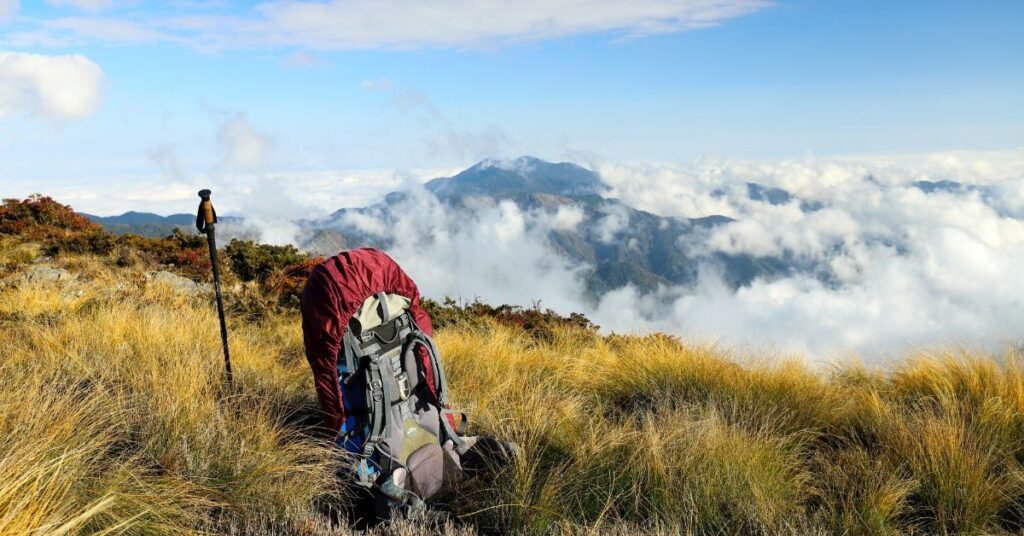
Setting off on a winter camping trip isn’t just about being excited; it means having the right stuff to stay safe in the cold. Let’s talk about why having the right gear matters.
Ensures Comfort and Safety in Challenging Conditions:
- Proper gear and equipment provide isolation against the cold and protection from harsh weather conditions and it confirms campers remain comfy and safe during their winter camping venture.
Provides Adequate Protection against Cold, Wind, and Drizzle:
- Quality gear, such as warm clothes, waterproof outerwear, and sturdy tents, protects campers from cold, strong winds and precipitation like snow or rain.
- Quality gear ensures comfort and safety by keeping campers warm and dry throughout their journey.
Enhances Mobility and Functionality during Outdoor Activities:
The selection of the right gear develops mobility and functionality in campers. It allows campers to move freely and participate in multiple outdoor activities such as hiking, snowshoeing, or skiing without being restricted by bulky or insufficient equipment.
Facilitates Efficient Cooking, Navigation, and Communication:
- Portable stoves and cooking tools make meal preparation easy, even in faraway wilderness areas where traditional cooking facilities may not be available.
- GPS devices provide accurate navigation in unfamiliar landscapes, Also it will make sure that tourists can find their way comfortably and effectively without getting lost.
- Communication devices like two-way radios or satellite phones allow campers to stay connected with others, these devices provide a way to reach out for help in emergencies or simply stay in touch with friends and family.
Minimizes Risks of Cold-Related Injuries and Health Issues:
- By providing ample insulation, protection, and tools for staying warm and healthy, these proper tools minimize the risks of cold-related injuries and health issues such as hypothermia, frostbite, or respiratory infections.
Investing in proper gear and equipment is not just about comfort; it’s a crucial step toward ensuring a safe and enjoyable outdoor experience in any season. So, gear up, stay prepared, and embark on your next adventure with confidence.
Winter Camping Equipments
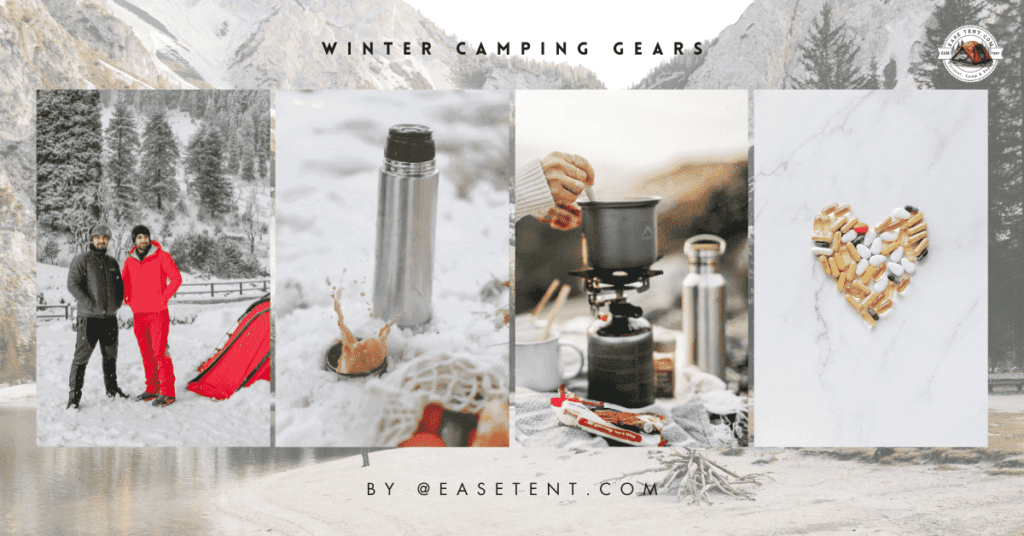
Insulated Sleeping Bag:
- A sleeping bag designed for cold weather camping provides extra warmth and insulation to keep you comfortable during chilly nights.
Thermal Sleeping Pad:
- A thermal sleeping pad provides insulation from the cold ground, preventing heat loss and ensuring a more comfortable sleep.
- Tent with a Sturdy Frame and Snow Skirt: A tent with a sturdy frame (A-frame or dome-shaped) can handle strong winds and heavy snowfall, while a snow skirt keeps cold air out and helps keep the inside of the tent warm.
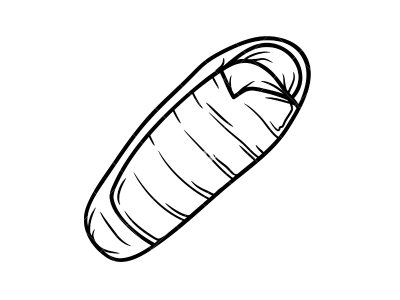
Portable Heater:
- A portable heater that is designed for safe indoor and outdoor use, will offer additional warmth inside the tent during cold-weather camping trips.
Windproof and Waterproof Outerwear:
- Windproof and waterproof jackets, pants, gloves, and boots are vital for outdoor outings, they provide reliable protection against rain, snow, and wind to keep you relaxed and dry throughout your adventures.
A Portable Wood Stove:
- A portable camping wood stove, along with extra fuel, allows you to easily cook hot meals and drinks, which keeps you warm and energized during your outdoor adventures.
- It’s an easy methodology to stay comfortable and well-nourished while exploring nature.
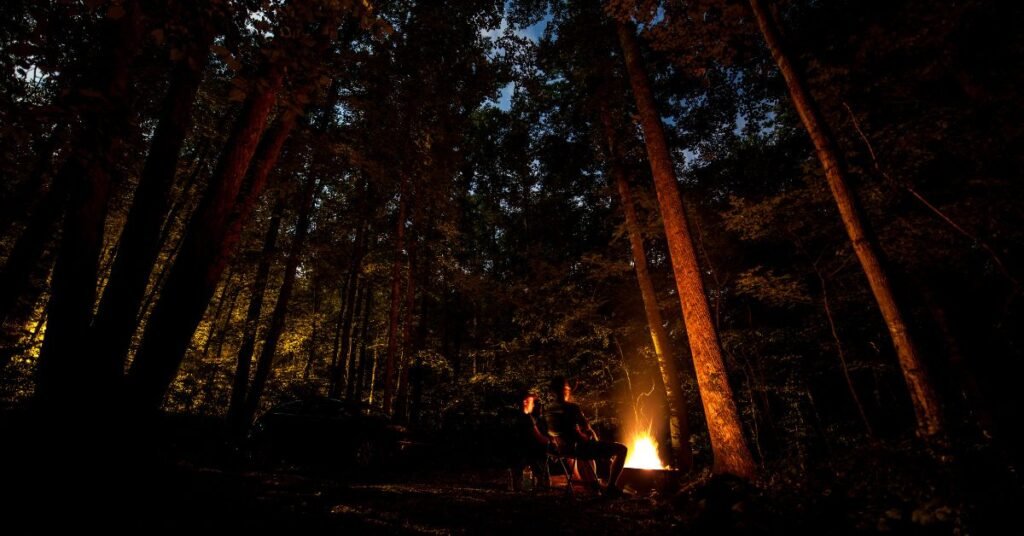
Cooking Gears:
- Pot, pan, spatula, and other cooking instruments suitable for cold weather cooking gear permit you to prepare meals efficiently in freezing outdoor conditions.
High-Energy, Non-Perishable Foods:
- High-energy, non-perishable foods provide essential vitamins, minerals, and calories to fuel your open-air journeys without the need for refrigeration.
Insulated Water Bottles or Thermos:
- Insulated water bottles or thermos keep hot drinks warm for extended periods and also ensure comfort and hydration in cold weather.
Headlamp or Flashlight:
- A headlamp, flashlight, and extra batteries are crucial for nighttime safety and visibility during outdoor voyages.
- It’s a reliable light source that guides you in the right direction to guarantee that you can navigate with assurance even when it’s dark, while further batteries provide extended usage and peace of mind.
Snow Shovel:
- A snow shovel is important for clearing snow around the campsite, creating a safe and accessible area for setting up tents and cooking.

Multi-Tool Knife:
- A multi-tool or knife is a must-have product for outdoor escapades, this tool offers versatility for cutting wood, repairing gear, and handling emergencies.
- Its compact design makes it easy to carry and certifies that you’re prepared for various situations in the wilderness.
Use of Multi-tool knife:
- A multi-tool knife serves many functions such as cutting, slicing, sawing, and even opening cans or bottles.
- It also includes features like screwdrivers, pliers, and scissors that make it invaluable for a wide range of tasks during outdoor activities.
First Aid Kit:
- A first aid kit for winter weather includes hand warmers, foot warmers, and medicines to treat injuries and illnesses caused by the cold.
Here’s an in-depth guide for the supplies in a winter camping first aid kit, categorized by purpose and function.
| Category | First Aid Kit Essentials for Winter Camping | Functions |
|---|---|---|
| Wound Care | Adhesive bandages (various sizes) | Cover small cuts and wounds |
| Gauze pads and adhesive tape | Secure and protect larger wounds | |
| Sterile gloves | Prevent contamination of wounds | |
| Antiseptic wipes | Clean and disinfect wounds | |
| Tweezers and scissors | Remove debris and cut bandages | |
| Medication | Pain relievers (ibuprofen, acetaminophen) | Relieve pain and reduce fever |
| Antihistamine medication | Treat allergic reactions | |
| Thermometer | Monitor body temperature | |
| Hydrocortisone cream | Relieve itching and inflammation | |
| Skin Protection | Moleskin or blister pads | Prevent and treat blisters |
| Lip balm with SPF | Protect lips from sunburn | |
| Sunscreen | Protect skin from sunburn | |
| Hydration/Nutrition | Oral rehydration salts | Replenish electrolytes and fluids |
| Injuries/Support | Ace bandage | Support sprains and strains |
| Triangle bandage | Immobilize injured limbs | |
| CPR (Cardiopulmonary resuscitation) mask | Provide protection during CPR | |
| Temperature Management | Instant cold packs | Reduce swelling and pain |
| Hand warmers | Provide warmth in cold conditions | |
| Emergency blanket | Retain body heat and provide shelter | |
| Personal Care | Personal medications | Treat specific medical conditions |
The above table format provides an in-depth summary of the first aid kit necessities for wintertime camping, including their category, specific items, and functions.
Snow Goggles or Sunglasses:
- Snow goggles or sunglasses protect your eyes from glare (Intense light reflection) and harmful UV rays and also enhance visibility and inhibit snow blindness.
Waterproof Matches or Lighter:
- Waterproof matches or a lighter is needed for starting fires in wet or snowy conditions.
Compact Snow Saw:
- A compact snow saw is a useful instrument for cutting wood for campfires or emergency shelter construction in snowy environments.
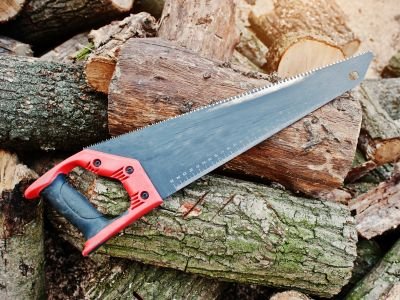
Emergency Blanket or Bivvy Sack:
- An emergency blanket or bivvy sack offers protection and insulation during emergencies or unexpected weather changes by retaining body heat and guarding against wind and rain.
- This emergency blanket and bivvy sack are Compact lightweight and a necessary kit for outdoor safety.
Personal Hygiene Items:
- Personal hygiene items like toilet paper and hand sanitizer ensure cleanliness and comfort during extended outdoor stays.
How to organize a winter camping trip?
Choosing the right location
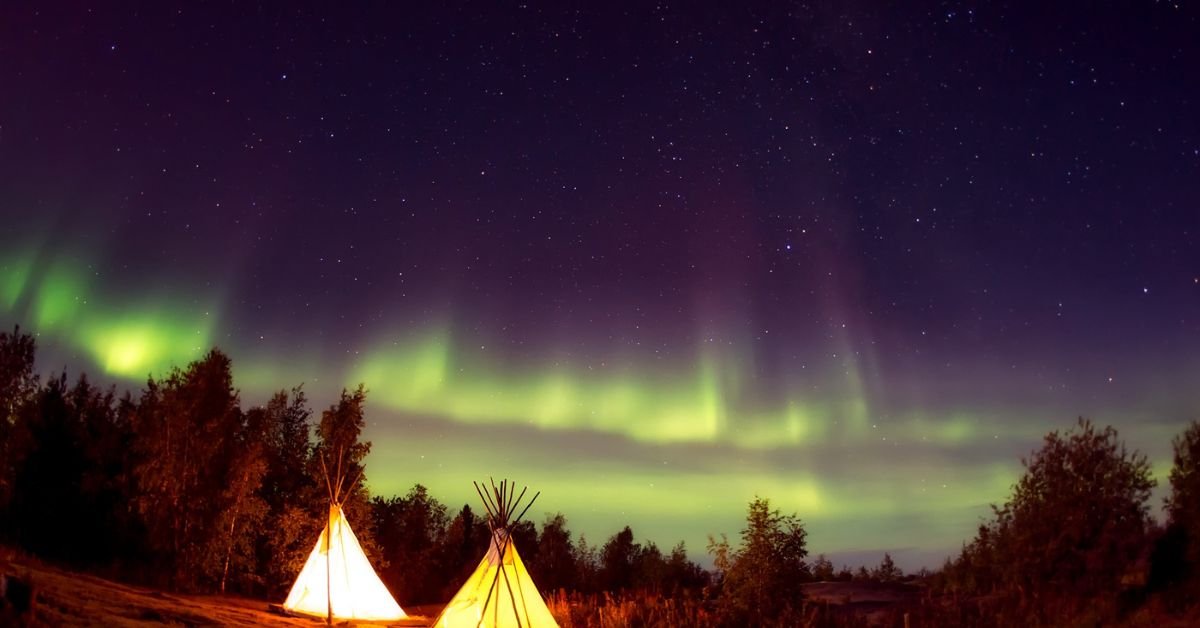
Factors to consider when selecting a campsite:
- While selecting a campsite, always prioritize flat and level ground to ensure a comfortable and stable setup for your tent.
- Ensure there are nearby water sources available for drinking, cooking, and cleaning, and check for firewood availability to fuel your campfire and provide heat.
- Check how close the camping spot is to hiking trails or other exciting things to do in nature, so you can easily explore and have a great time out there.
Researching possible destinations:
- Explore various camping spots or national parks that provide winter camping options to find the perfect spot for your trip.
- Gather information by reading reviews or watching videos to understand the geographical features, facilities, and accessibility of each location before making a decision.
Weather monitoring and forecasts:
- Stay updated with the weather forecast before your trip so you can plan as needed and ensure your safety.
- Focus on forecasts for the temperature, wind speed, as well as chances of rain or snow to prepare for weather conditions.
Stay flexible and be ready to modify your schedule if the weather changes.
Creating a schedule
Setting realistic goals:
- It’s important to plan activities that match the skill level and physical fitness of your group members. This ensures that everyone can participate comfortably and safely.
- Additionally, consider factors such as the duration of daylight and expected weather conditions when scheduling open-air activities. This helps you to make realistic plans and avoid potential risks associated with adverse weather or limited daylight hours.
Emergency planning
Have backup plans in case of unexpected weather or emergencies:
- It’s essential to prepare different options for your activities in case the weather takes a turn for the worse or if unexpected dangers arise.
- Consider indoor activities or substitute out-of-doors options that can be easily adapted to different weather conditions to ensure your trip remains enjoyable and safe.
Stay flexible and be prepared to change your program if necessary:
- Flexibility is key when dealing with unpredictable circumstances during your winter camping trip.
- Be prepared to change your plans as needed during your trip. This could mean moving activities to different times or even finding a new spot to camp, all to ensure everyone stays safe and has a good time.
These steps will help you establish a winter camping trip successfully, ensuring a safe and enjoyable outdoor experience for you and your group.
Winter camping activities
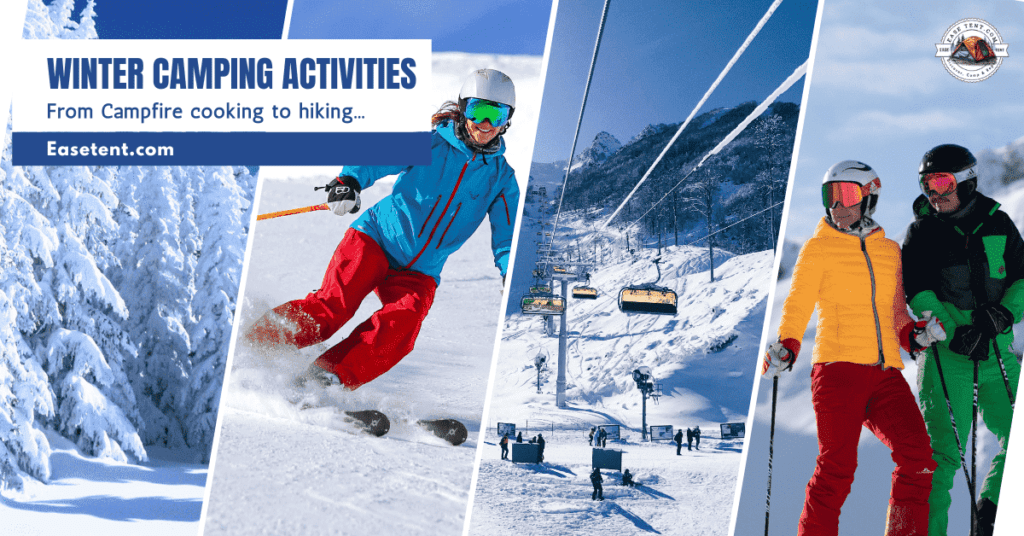
Snowshoeing:
- Snowshoeing involves walking on snow with special shoes that help to distribute weight, which makes it easier to move across snowy tracks.
- This is a fun and accessible way to enjoy the winter out in the open, that’s appropriate for people of all ages and skill levels.
- Snowshoeing offers an appealing and calm way to experience the beauty of snowy regions as well as provides a great workout for both body and mind.
Ice fishing:
- Ice fishing means making holes in frozen lakes and then using bait and fishing gear to catch fish below the ice, it’s important to prepare and understand safety measures for a successful outing.
Cross-country skiing:
- Cross-country skiing means skiing over snowy landscapes using skis, poles, and boots, this activity offers a good way to explore winter scenery and stay active in the open air.
- It’s a great exercise and doesn’t need much gear, so anyone can try it.
Snow sculpting and Igloo building:
- Snow sculpting or igloo building means shaping snow into statues or building shelters from snow blocks.
- It’s an amusing activity that encourages teamwork and creativity and igloos offer protection from the cold.
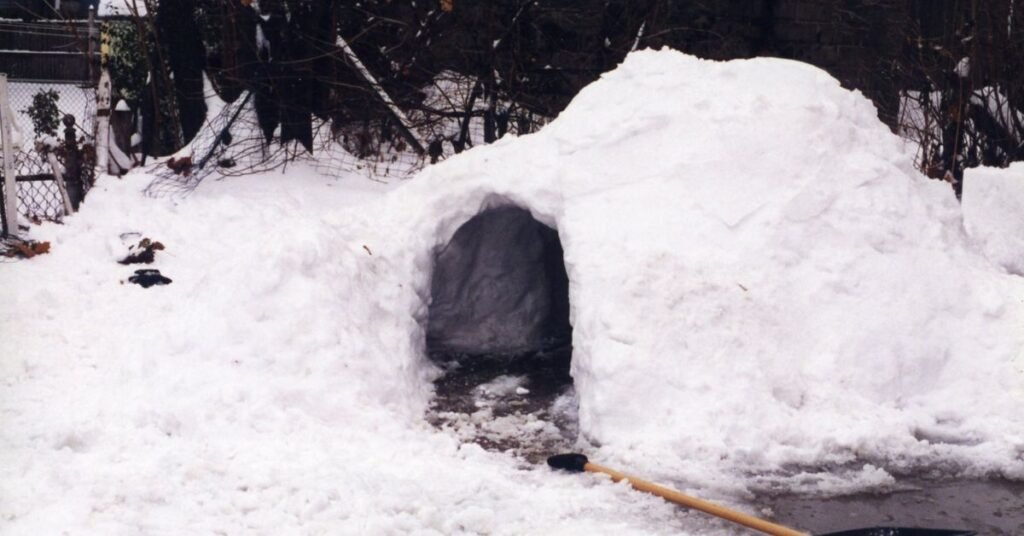
- Snow sculpting or igloo building means shaping snow into statues or building shelters from snow blocks.
- It’s an amusing activity that encourages teamwork and creativity and igloos offer protection from the cold.
Winter wildlife tracking:
- Winter wildlife tracking involves searching for animal footprints and signs in the snow to learn about their behaviors and habitats during winter.
- It helps us understand how animals live in frigid environments and appreciate nature’s beauty.
- Tracking animals in the snow requires patience and careful observation while respecting their homes.
Campfire cooking and baking:
- Cooking and baking over a fire while camping is known as campfire cooking.
- It’s exciting and allows you to cook things like hot dogs, marshmallows, and even stews or baked goods.
- It’s an excellent way to enjoy delicious food and create memories with friends and family out in nature.
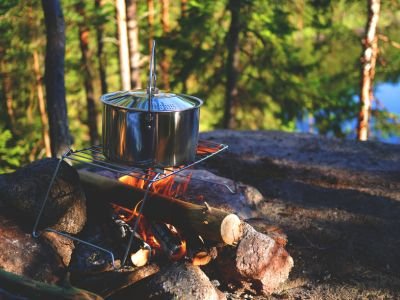
Campfire cooking and baking:
- Cooking and baking over a fire while camping is known as campfire cooking.
- It’s exciting and allows you to cook things like hot dogs, marshmallows, and even stews or baked goods.
- It’s an excellent way to enjoy delicious food and create memories with friends and family out in nature.
Snowball fights and Snowman building:
- Snowball fights and snowman building are both wonderful activities that can be played with ice during winter.
- In a snowball fight, you throw snowballs at each other and try to avoid getting hit.
- Building a snowman involves the process of rolling snow into balls and stacking them up to make a character that you can decorate with things like sticks and carrots for arms and a nose.
- These activities are a great way to have fun outside in the snow with friends and family.
Stargazing:
- Stargazing refers to looking toward the night sky and observing stars, constellations (Star patterns), and other interesting sights in space.
- It’s a peaceful and amazing activity where you can appreciate the beauty of the universe. You can do stargazing just by the naked eye, or you can use telescopes or binoculars to observe more of the night sky.
- It’s an enjoyable approach to acquiring information about space and enjoying the darkness of the night.
Storytelling around the campfire:
- Storytelling around the campfire is a pleasant and traditional activity where people share tales, myths, and personal experiences while gathered around a crackling fire.
- It creates a warm and inviting atmosphere that allows participants to share experiences, entertain themselves, and create lasting memories under the starlit sky.

Winter photography:
- Winter photography means taking pictures of snowy scenes and frosty landscapes during the chilly months.
- It’s a relaxing pastime where you can capture the beauty of winter, like snowflakes and cloudy mornings.
- With the right camera and skills, you can capture stunning photos that show off the season’s magic.
Landscape painting:
- Landscape painting means artists use paint to create pictures of natural scenarios, like mountains or forests.
- They show different seasons and weather in their artwork, using colors and shapes to capture the beauty of nature.
- It’s an enjoyable and innovative method for artists to share their love for nature and convey how they see the world.
Winter survival skills practice:
- Winter survival skill practice means learning fundamental skills like making fires and building shelters to stay shielded in frigid conditions.
- It’s like preparing for outdoor adventures in winter by knowing what to do if something unexpected happens.
Ice skating:
- Ice skating means that you glide on frozen ponds or lakes with special shoes with blades.
- It’s an entertaining winter sport that lets you feel free to skate on the ice and it’s great for getting exercise and having fun with friends.
- Always keep in mind to verify that the ice is solid and wear appropriate clothing to stay warm.
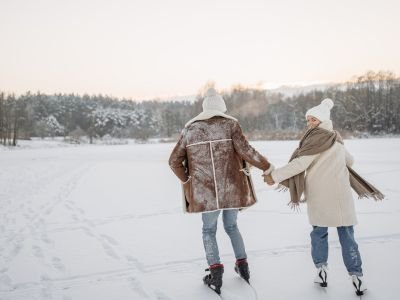
Sledding and Tobogganing:
- Sledding and tobogganing are exciting winter hobbies where you slide down snowy hills on sleds or toboggans.
- It’s an unforgettable experience for everyone, speeding down the slopes and enjoying the snowy scenery.
- Whether you’re on a sled or toboggan, it’s all about having a great time in the winter snow. So grab the necessities, wrap them, and prepare yourself for some snowy a blast.
Is sledding and tobogganing are same?
- Sledding might indicate any type of sliding activity using a sled, while tobogganing specifically refers to riding on a long, narrow sled called a toboggan.
Snow hiking and Exploring:
- Snow hiking or exploring refers to hiking via snow-covered regions to enjoy the calmness of winter and see the beauty of snowy landscapes.
- It’s a calm and exciting way to experience nature during the colder months, whether you’re following trails or making your path.
Bird watching:
- Bird watching is the activity of observing and identifying the birds in their natural habitats.
- It’s a relaxing and informative hobby that allows you to appreciate the elegance and diversity of bird species, from dynamic songbirds to majestic birds of prey.
- All you need is a pair of binoculars and an attentive mind to enjoy this outdoor hobby and communicate with nature
Ice fishing:
- Ice fishing means making holes in frozen lakes and then using bait and fishing gear to catch fish below the ice, it’s important to prepare and understand safety measures for a successful outing.
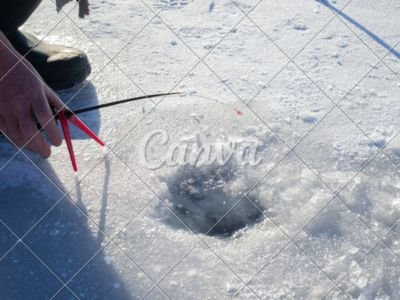
Ice climbing:
- Ice climbing is a daring sport where climbers climb to frozen waterfalls or ice-covered cliffs by using specialized gear such as ice axes and crampons.
- It’s a thrilling and challenging sport that requires strength, technique, and courage.
- This activity offers a unique opportunity to conquer the icy landscapes and experience the majesty of winter in a whole new way.
Orienteering game in the snow:
- Discover the exhilaration of navigating through the splendors of nature in orienteering, an engaging outdoor adventure that tests your skills in finding hidden checkpoints using maps and compasses.
How to play orienteering?
To play orienteering, you’ll need a map of the area and a compass. The goal is to navigate from point to point, finding checkpoints marked on the map. Start with reviewing the map to plan your route and then use the compass as it helps you find the right direction. As you move through the trail, maintain a record of spots and features to stay on track.
Once you reach each checkpoint, move on to the next one until you’ve completed the entire course of action. Orienteering games in the snow follow the same principles but add the challenge of navigating through snowy terrain.
Yoga and Meditation in the Snowscape:
- Practicing yoga and meditation in the snowscape provides a peaceful way to relax and recharge, surrounded by the peaceful splendor of icy countryside, which helps to soothe the mind and rejuvenate the body.
Winter camping safety tips
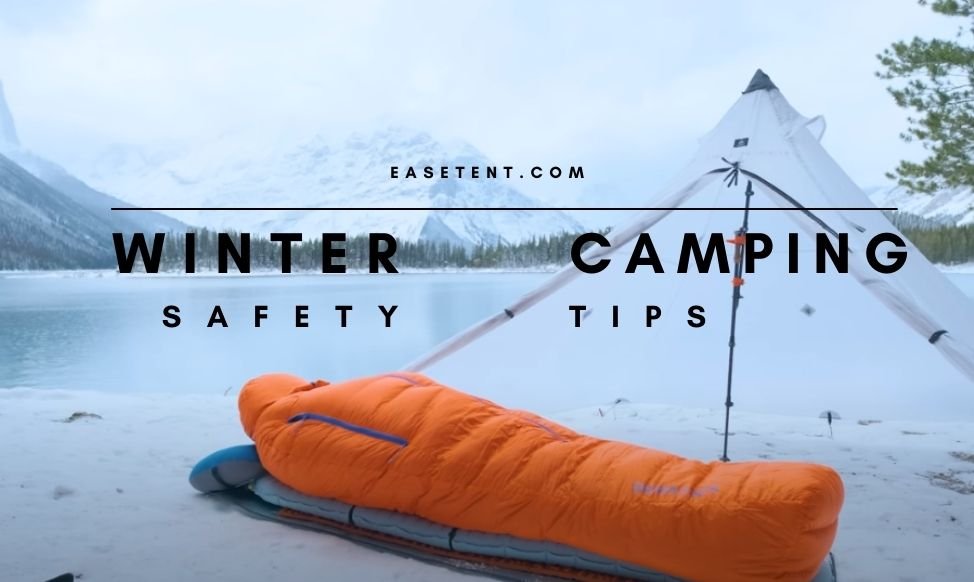
Weather Awareness:
- Understanding the weather is important when you’re planning to camp in winter. It helps you get ready for things like snowstorms, wind chill, and cold temperatures.
- By keeping an eye on the forecast, you can get the right clothes, and gear as well as choose the best time and place to camp.
- By doing so, you stay safe and cozy during your outdoor trip.
Communication and Emergency Planning:
- Communication and evacuation preparation means making sure everyone in your group can communicate with each other easily and having important contact information in case of emergencies.
- So, if something goes wrong, you’ve been equipped to handle the situation and get help if required during your camping trip. It’s like having a backup plan so that if something happens wrong, you know what you’re supposed to do and whom to call for help.
Layered Clothing:
- Wear multiple layers of clothing to trap heat and regulate body temperature effectively in cold weather.
Hydration and Nutrition:
- Stay hydrated and nourished with warm drinks and high-energy foods to maintain body heat and energy levels.
Preventing Hypothermia:
If hypothermia happens, follow these steps to get rid of Hypothermia
Get out of the frigid temperature area:
Move to a sheltered area to protect yourself from chilly winds and precipitation.
Take off wet clothes:
Wet clothing may contribute to dropping your body heat even faster. Take out any damp clothing and replace it with dry multiple layers if possible.
Warm-up:
Use blankets, extra clothing, or even your body heat to get yourself warmed up. If you have access to a heating source like a campfire or heater, use it carefully to warm yourself.
Drink warm fluids:
Drink cozy beverages like hot tea, soup, or hot chocolate that will raise your body temperature from the inside.
Seek medical help:
If someone is showing symptoms of severe hypothermia, such as confusion, slurred speech, or unconsciousness, you have to look for medical treatment immediately. In an emergency, call emergency services or start any emergency communication devices that are available.
Ventilation in the tent:
- Maintaining ventilation in your tent or shelter means having ways for fresh air to enter and stagnant air to escape.
- This helps keep the inside atmosphere clean and prevents it from getting too humid.
- It’s like opening a window to let in some fresh air when you’re indoors.
- Having good ventilation keeps you comfortable and healthy during your camping trip.
Safe Campsite Selection:
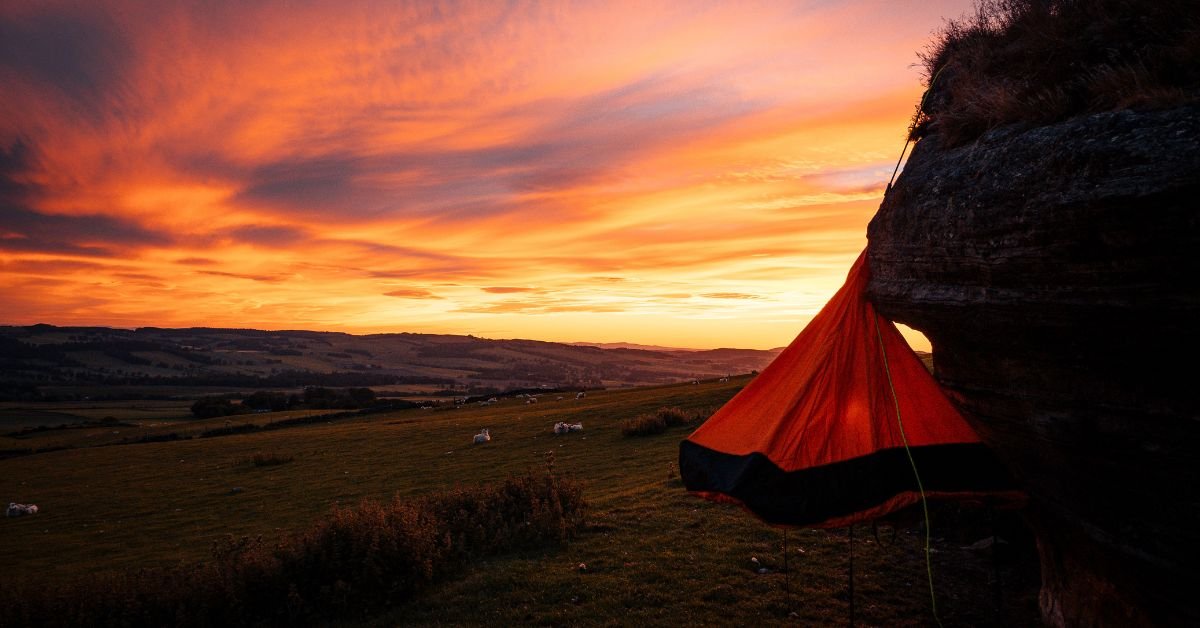
- Choosing a safe spot for your campsite in winter is super important.
- Find a place that is covered by strong winds and far from dangers like falling trees or landslides.
- Make sure the ground is flat and won’t get flooded, and it’s also good to be close to water and emergency help if you need it.
Caution around Frozen Terrain:
- It’s important to take caution when hiking on frozen surfaces in the winter.
- Check out for slippery spots like ice or hard-packed snow that might let you slip and fall.
- Take your time, use special grips for your shoes, and be aware of any possible bumps or obstacles hiding under the snow.
High-Energy Food Choices:
- Consume high-energy and easily digestible foods to fuel your body and maintain warmth during outdoor activities, such as;
- Nut butter (Peanut and almond butter), Bananas, Rice cakes, Boiled potatoes and Greek yogurt.
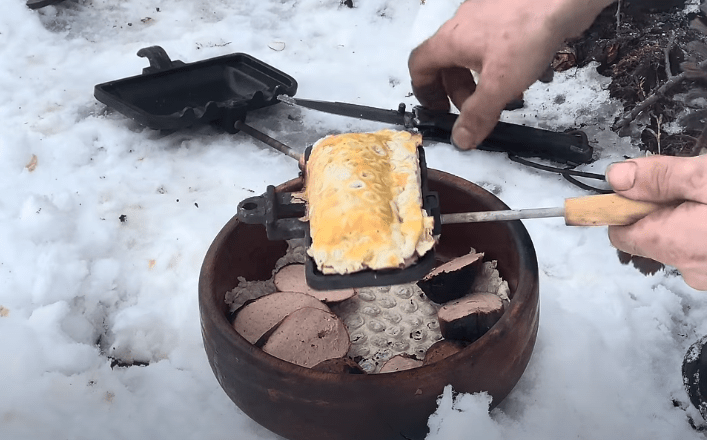
Emergency Supplies:
- Carry essential emergency supplies such as first aid kits, navigation tools, and signaling devices for unpredicted emergencies.
Fire Safety:
- Follow proper fire safety rules and regulations when building and maintaining campfires to avoid accidents and wildfires.
Leave No Trace Before Leaving:
- Follow the Leave No Trace rules to keep and protect the environment clean.
- This means not leaving any waste behind, not harming plants or animals, and being careful with fires.
- Doing this, we help keep the environment healthy and beautiful for everyone to enjoy.
Winter Survival Skills:
- Furnish yourself with basic winter survival skills such as building shelters, starting fires, and navigating in snow conditions.
Wildlife Awareness:
- When you’re camping, keep an eye on the wildlife around you.
- This means respecting their space, not feeding them, and storing food carefully to prevent attracting wildlife to your campsite.
- By being attentive to wildlife, we can avoid conflicts and help protect both animals and ourselves during our outdoor excursions.
Camping with friends:
- Camping with friends or family is safer because you can help each other if there is a problem, like getting lost or hurt.
- Plus, it’s more enjoyable to have company while exploring the natural world.

Carbon Monoxide Monitoring:
- Carbon monoxide tracking means monitoring the presence of this harmful gas, which can be produced by camping stoves, heaters, or generators.
- It’s important to have proper ventilation when using these devices to avoid carbon monoxide buildup because it can cause serious health issues or even be life-threatening.
- Using carbon monoxide detectors can help guarantee a safe camping experience by notifying you of any dangerous levels of this gas.
Prioritizing Safety:
- Prioritizing safety means making sure that staying safe is the most important thing during your camping trip.
- This includes being careful around things like fire and making sure you don’t put yourself in hazardous situations like going near cliffs.
- By always thinking about safety first, you can have a fun and relaxed camping experience.
Preparing yourself physically and mentally
- Taking care of your body and mind is crucial for a successful camping trip.
- Stay active and healthy to handle physical challenges, and mentally prepare for potential difficulties by staying positive and having a plan.
Physical fitness considerations:
- Being physically fit helps you handle the demands of camping, like hiking and carrying equipment.
- Regular exercise, stretching, and staying hydrated are important for maintaining your fitness and avoiding injuries during your trip.
Mental preparation for challenging conditions:
- Mentally preparing for challenges involves staying calm, positive, and adaptable.
- Visualize how you’ll handle difficult situations and focus on problem-solving abilities.
- This mindset helps you to stay strong and enjoy your camping experience regardless of being experienced with unanticipated challenges.
Gear and Equipment Safety:
- Ensuring your gear and gadgets are in good condition is critical for safety.
- Check gears before departing, make any necessary repairs, and review that everything is packed securely.
- This guarantees that all your equipment operates properly and minimizes the risk of accidents during the journey.
Fire building:
- Knowing how to build an open flame safely is a valuable skill for camping.
- Gather dry wood and kindling, develop a fire pit away from flammable materials, and follow proper techniques for starting and maintaining a fire.
- This provides light, heat, and a way of cooking while minimizing the risk of accidents.
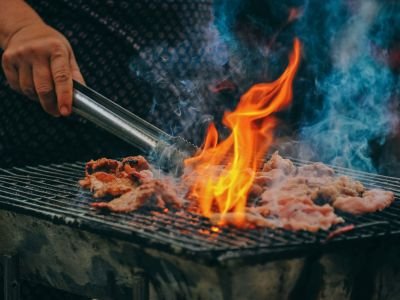
Fire Safety:
- Implementing fire safety is a must to prevent wildfires and disasters.
- Never leave a fire unattended, fully extinguish fires before leaving, and strictly adhere to all fire regulations in the area.
- By being responsible with fire, you protect yourself as well as others and the environment.
How to pack a Backpack for a Camping trip
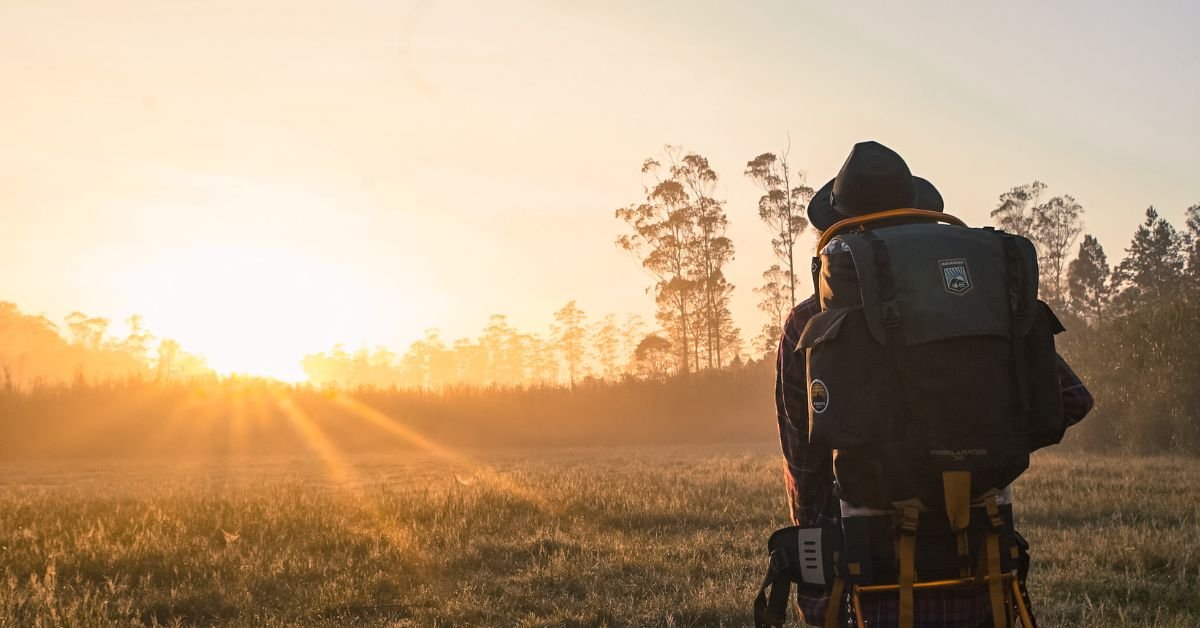
Prioritizing Essential Items:
- It’s extremely important to start by identifying that what are most important things for your camping trip.
- These essentials typically include items like a tent or sleeping bag for shelter, enough food and water to nourish you throughout your journey, as well as suitable clothing to keep you relaxed in the present weather conditions.
- By prioritizing these key items first, you ensure that you’re fully prepared for the main aspects of your camping experience, such as safety and basic comfort before moving on to the additional gear.
Efficient Packing Strategies:
- Packing your backpack properly is important for maximizing space and minimizing unnecessary bulk.
- One effective strategy is to tightly roll your clothing items, which not only saves space but also helps prevent lines and wrinkles.
- Additionally, using compression sacks for larger items like sleeping bags can further reduce the overall volume of your pack. When you’re organizing your gear, consider how easy it is to get to those items that you utilize the most.
- Put those items close to the top of your luggage or in outside pockets so that you can reach them quickly.
- By doing this, you won’t need to spend time searching through all your stuff whenever you need something.
Organizing Gear into Categories:
- Arranging your gear into categories facilitates organization and accessibility during your camping trip.
- For instance, you might separate cooking supplies, toiletries, first aid essentials, and clothing into separate sections within your backpack.
- This approach keeps everything neat and well-organized during your adventure.
Distributing Weight Evenly:
- Proper weight distribution inside your backpack is crucial for maintaining balance and reducing stress on your body during long hikes or treks.
- Put the heavy stuff nearer to your backside and in the middle of your backpack.
- This spreads the weight out better and stops your backpack from making you feel uncomfortable.
- By distributing the load strategically, you’ll minimize the risk of discomfort, fatigue, or even injury during your camping outing.
Utilizing Storage Containers:
- Using waterproof bags or containers was necessary for guarding your gear from moisture and keeping everything arranged inside your briefcase.
- These containers not only protect your belongings from rain or accidental spills but also make it easier to locate specific items when required.
- Whether you opt for waterproof stuff bags, durable plastic bins, or specialized dry bags, investing in proper storage solutions ensures that your gear remains dry, secure, and easily available throughout your camping trip.
Creating a Checklist:
- Making a detailed list of all the items you need to bring will guarantee nothing mandatory is forgotten behind.
- Start by listing camping fundamentals such as shelter, cooking equipment, food, water, clothing, and personal items.
- As you pack each item, verify it off on the list to monitor the progress and ensure that nothing important is missed.
- A well-organized checklist not only helps simplify the packing process but also provides peace of mind, knowing that you’re fully prepared for your camping adventure.
Final checks and departure

Gear Checklist Review:
- Double-check all your gear against your checklist to ensure you haven’t forgotten anything important for your trip.
Weather Forecast Verification:
- Confirm the weather forecast to ensure you’re prepared for the conditions you’ll encounter during your camping adventure.
Plan Notification:
- Inform someone of your planned itinerary, including your destination and expected return time, for safety purposes.
Campsite Booking Confirmation:
- Make sure your campsite registration is confirmed to avoid any last-minute issues with accommodation.
Vehicle Safety Inspection:
- Conduct a safety check of your vehicle to ensure it’s in good condition for the journey to your camping destination.
Equipment Fueling:
- Ensure all equipment requiring fuel, such as stoves or lamps, is fully fueled up so you can use it during your trip.
Item Securing:
- Secure all hanging things to prevent them from shifting or falling during transportation, to guarantee a safe journey.
Waste Disposal:
- Dispose of all kinds of garbage or waste properly before leaving to keep the campsite clean and environmentally friendly.
Safety Briefing:
- Provide a precautionary talk to all members of your camping event, including important guidelines and scenarios of emergency.
Early Departure:
- Aim to depart ahead of schedule to maximize daylight hours and allow for any unexpected delays, to ensure a smooth start for your camping adventure.
Conclusion.
In conclusion, embarking on a winter camping adventure requires careful preparation and consideration of various factors. From mastering food preparation to organizing activities and ensuring safety, every aspect plays a crucial role in ensuring a successful and enjoyable experience. By understanding the challenges of winter camping and equipping yourself with the proper gear and knowledge, a person can appreciate the beauty and serenity of the winter landscape while staying safe and comfortable. Whether it’s navigating through snowy conditions, participating in outdoor activities, or simply basking in the tranquility of nature, wintertime camp offers an opportunity for unforgettable adventures and cherished memories.
FAQs
How cold is too cold for winter camping?
Winter camping can be enjoyable in temperatures as low as 20°F (-7°C), but it’s essential to be properly equipped with warm clothing, sleeping bags, and shelter. Extreme cold below 0°F (-18°C) can pose significant risks and may not be suitable for all campers.
How much temp is good for camping?
The ideal camping temperature varies depending on personal preference and the season. Generally, temperatures ranging from 50°F to 70°F (10°C to 21°C) are considered comfortable for most campers, providing pleasant conditions for outdoor activities and sleeping.
How many layers do I need for a camping trip?
It’s recommended to dress in layers for camping, typically consisting of a base layer for being able to absorb moisture, an insulating layer for warmth, and an outer layer for weather protection. Adjust the number of layers based on the weather conditions and your activity level.
What food can you take camping without cooking?
Non-perishable foods like trail mix, energy bars, dried fruits, nuts, granola, canned beans, canned tuna, peanut butter, crackers, and jerky are excellent options for camping without cooking.
What food keeps you warm while camping?
Foods high in carbohydrates and fats, such as oatmeal, pasta, rice, nuts, cheese, chocolate, and hot beverages like soup or cocoa, can help keep your body warm and provide energy during cold-weather camping trips.
What is easy camping food?
Easy camping food includes pre-packaged meals, sandwiches, wraps, instant soups, dehydrated meals, fruits, vegetables, and snacks that require minimal preparation and cooking.
What is the best cooking method for camping?
The best cooking methods for camping depend on personal preference and available equipment but commonly include campfires, portable stoves, grills, Dutch ovens, and lightweight backpacking stoves.
How do you cook vegetables while camping?
Vegetables can be cooked while camping by grilling them over a campfire or portable stove, steaming them in foil packets, or adding them to soups, stews, or pan-fries.
What weather is comfortable for camping?
Comfortable camping weather typically includes mild temperatures, low humidity, clear skies, and minimal wind. Temperatures ranging from 50°F to 70°F (10°C to 21°C) are generally considered ideal for camping.
Can you get hypothermia during camping?
Yes, hypothermia is a risk when camping, especially in cold and wet conditions. Proper preparation, including wearing appropriate clothing, staying dry, and seeking shelter, can help prevent hypothermia while camping.
You May Also Like
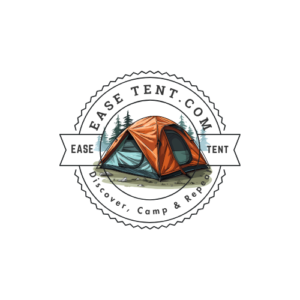
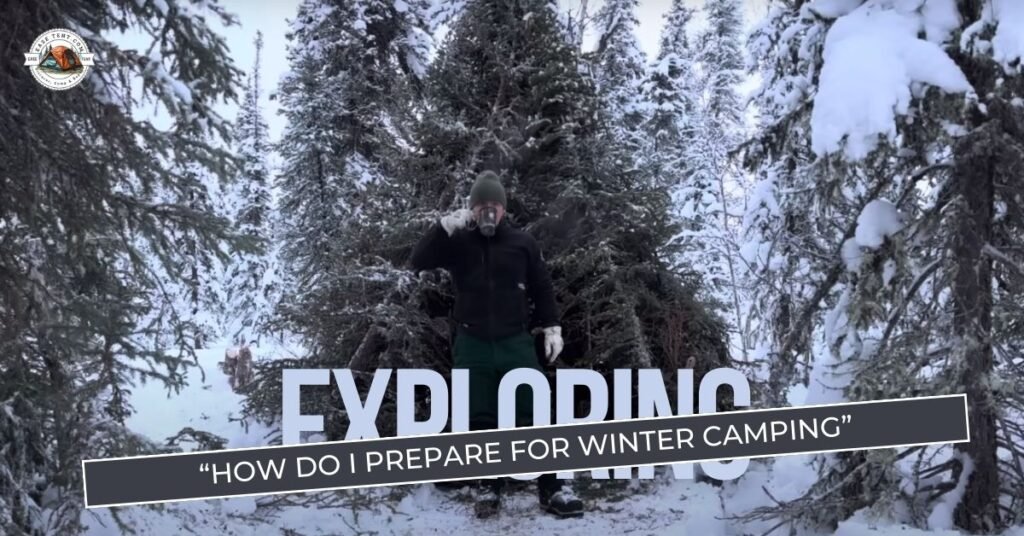
Pingback: How to Cool a Tent Without Electricity - Zero to Hero
Pingback: How to Dispose of Camping Propane Tanks? - Easetent.com
Pingback: Difference Between Butane and Propane Camping Gas?
Pingback: Can Camping Make You Sick - Easetent.com
Pingback: Alone with Nature: "Top Tips for Privacy in the Wild"
Pingback: Difference between Butane and Propane Regulators?
Pingback: Camping with a New Tattoo: Risks, Precaution & Consideration